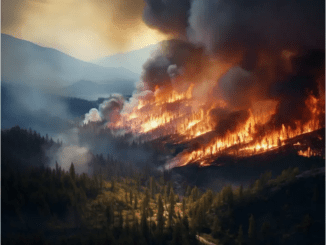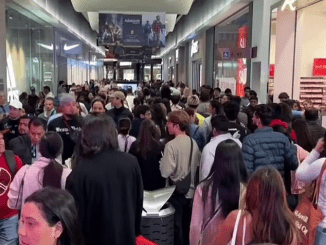
On Elon Musk’s 52nd birthday, the Tesla CEO found himself facing a situation that was anything but celebratory. While most people would be marking the milestone with reflection and festivities, Musk was instead dealing with a corporate crisis that shook Tesla to its core. In a move that surprised many, Tesla announced the layoff of 28,000 employees—a decision that has not only led to widespread criticism but also placed Musk’s ambitious vision for the company in jeopardy.
The Mass Layoffs and Their Impact
Tesla has long been a leader in the electric vehicle market, known for its bold innovations and aggressive expansion plans. However, Musk’s decision to lay off a significant portion of the workforce—28,000 employees, or approximately 10% of Tesla’s global staff—left both the public and investors shocked. The layoffs were part of an effort to restructure the company in the face of financial difficulties and rising production costs, as well as the mounting pressure to maintain profitability in a competitive market.
For many of the laid-off workers, the announcement came as a devastating blow. These were not just any jobs; they were positions within one of the most high-profile companies in the world, working on cutting-edge technology that promised to change the future of transportation. For Musk, it was a difficult decision that highlighted the complexities of running a business at the forefront of technological innovation. While some saw it as a necessary step to ensure Tesla’s long-term survival, others questioned whether Musk’s vision had led to this moment of crisis.
The Dream of Self-Driving Electric Taxis
At the heart of Musk’s vision for Tesla’s future is the dream of creating a fleet of self-driving electric taxis. Musk has long been vocal about his belief in autonomous vehicles and their potential to revolutionize transportation. His plan was to develop a network of fully autonomous electric taxis that would offer a new model of shared mobility, reducing the need for personal car ownership while providing consumers with an environmentally friendly, cost-effective alternative to traditional taxis.
However, the road to self-driving cars has proven to be far more difficult than Musk had anticipated. Despite significant investment in artificial intelligence and robotics, Tesla’s self-driving technology has faced numerous setbacks. The company has encountered technical challenges, regulatory hurdles, and fierce competition from other players in the autonomous vehicle space. Additionally, safety concerns surrounding Tesla’s Full Self-Driving (FSD) system have raised questions about the feasibility of Musk’s grand vision.
These issues have come at a time when Tesla’s market position is being increasingly tested. While the electric vehicle market has grown, so too has competition from traditional automakers and new startups. As a result, Musk’s dream of a self-driving electric taxi fleet remains distant, and the company’s financial stability is being called into question.
The Crisis Unfolds
The layoffs, combined with the ongoing struggles surrounding Tesla’s autonomous vehicle program, have thrown the company into turmoil. Musk, once hailed as the savior of the electric car industry, is now facing scrutiny from investors, employees, and critics alike. The question on many minds is whether Tesla can recover from this crisis and if Musk’s bold vision for the future is still attainable.
The layoffs have not only resulted in the loss of thousands of jobs but have also signaled deeper issues within Tesla’s operations. The company’s recent financial results have been less than stellar, with profits dipping despite increased vehicle deliveries. Musk’s focus on self-driving technology has required massive investments, but the returns have yet to materialize. Additionally, the public backlash against the layoffs has compounded the pressure Musk is already under.
Musk’s Response: A Vision Under Siege
Musk, however, remains undeterred by the negative press and continues to push forward with his ambitious goals. In a statement following the layoffs, Musk emphasized that the decision was made in order to streamline operations and ensure the long-term sustainability of Tesla. He acknowledged the difficulty of the situation but remained hopeful that the company’s investments in self-driving technology and energy solutions would eventually pay off.
Despite the challenges, Musk’s commitment to his vision for Tesla has not wavered. He still believes that the self-driving electric taxi network will be the key to the company’s future success, and he has doubled down on efforts to make it a reality. However, with each passing day, the obstacles continue to mount. Investors are beginning to question whether Musk’s singular focus on self-driving technology might have led him to overlook the fundamentals of running a business, such as cost control, profitability, and workforce stability.
The Future of Tesla
As Musk navigates this challenging period, the future of Tesla hangs in the balance. The company’s success has always been tied to Musk’s ability to innovate and take risks, but now, more than ever, it seems that his dream of transforming the transportation industry may be under siege. The layoffs, combined with the uncertainty surrounding self-driving technology, have created a crisis that will require significant leadership and strategic decision-making to overcome.
For Musk, his 52nd birthday will likely serve as a moment of reflection—a reminder of both the triumphs and the challenges that come with being at the helm of one of the most ambitious and high-profile companies in the world. As Tesla faces one of the most critical junctures in its history, the next few months will likely be pivotal in determining whether Musk’s vision will ultimately come to fruition or whether the company will struggle to find its footing in an increasingly competitive and challenging marketplace.
For now, Musk’s birthday may not be the joyful celebration he had hoped for, but it serves as a testament to the high stakes of leading a company at the forefront of technological innovation.


